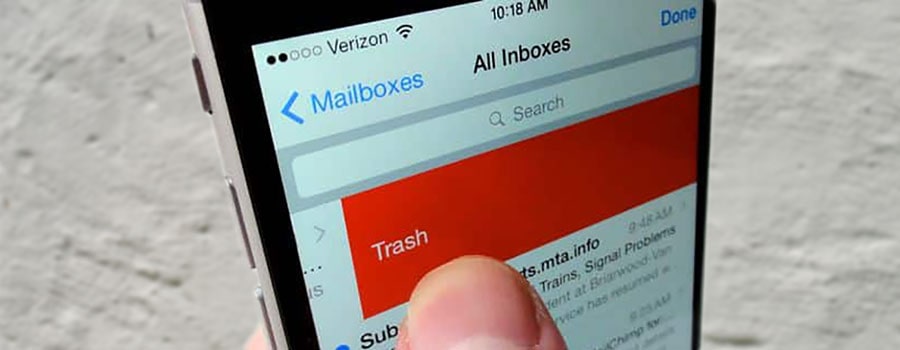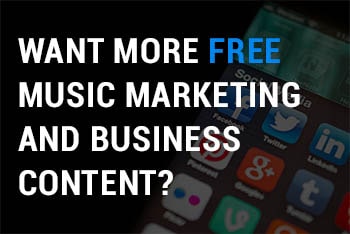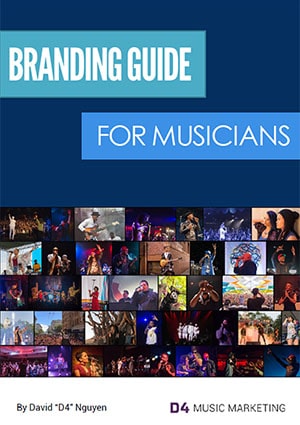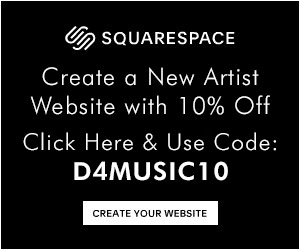
Have you ever tried pitching yourself or your music to someone in the music industry but rarely ever hear back?
Many of us are busy and yes, we get a lot of emails. At least for me, I actually read most of the emails I get from my website, but I only respond to maybe 5% of them. Why is that? Many artists are making the same common mistakes when it comes to email.
One of the most fundamental skills any emerging independent artist needs is to know how to communicate to music industry people professionally. So if you want to improve the chances of getting something you want, whether it’s pitching for a playlist, receiving coverage on a blog, performing at a venue, getting help with your career, you need to know the proper way to email someone.
Some of you may be thinking this sounds so basic, why dedicate a whole blog on this topic? Unfortunately, I still see a lot of these mistakes in my own inbox way too often so clearly this isn’t common sense.
In this blog, I’m going to cover basic guidelines on how to email people in the music industry by sharing 10 mistakes I’m seeing happening way too often.
1. Not doing the research
In general, what I notice from the email inquiries I get is that most people aren’t taking the time to do the research. It only takes 5 or so minutes.
Here are the main things you are looking for:
- Does the person have a name?
- Does the person you’re trying to reach have specific directions on contacting them?
- Is the person you’re reaching actually relevant to your needs?
- Have you checked out their work or what they’ve done in the past?
Here the things you want to do based on your research…
Always address people by their names
You must do everything you can to make sure you know the name of the person you’re emailing. If not, you need to research and do your best to find out who it is you need to contact. In some cases, the person you want to reach does not have their name listed so just a standard greeting is fine.
My name is listed on my website in the about page. Anyone can take a few seconds to figure out my name. There is no excuse that I should getting emails saying:
- Hi
- Hey
- Hey there
- Hello
- Dear Sir or Madam
- What’s up
- (No greeting at all)
I can’t speak for everyone, but as soon as I don’t see my name, I ignore it. It’s one of the easiest ways for me to filter who I read and respond to.
Pay attention to their directions
Some people, including myself, have specific instructions and guidelines on how to contact me. If someone emails me and does not follow it, then I will ignore it.
Look around on someone’s About or Contact page to find directions. Bloggers and playlisters will usually have submission instructions on their website so look for it.
Not paying attention to directions is an easy way to not get a response.
Figure out if this person is relevant to you
If you want to significantly reduce the chances of rejection, make sure that whoever you are pitching to is actually relevant to you and your goals. I see a lot of spraying and praying (spamming emails to as many people as possible) and it’s quite annoying.
You can save yourself and others a lot of time by only emailing/pitching to someone that makes sense. A practical example is don’t pitch your death metal song to a hip hop or indie folk playlister. Check out their playlists and actually listen to the music on it to see if it’s a good fit.
Or if a venue you want to perform at attracts a lot of hip hop fans, it may not be a good idea to pitch yourself if you’re a country artist. Check out their social media to see the type of acts they are hosting.
I get so many random emails pitching services that are not relevant to what I do. No, I don’t need a vacuum cleaner for my office (I don’t have one!) or catering services for my company (It’s only me!).
Key Takeaway: Spend the time to do the research and target the right people that make sense. Quality over quantity.
2. Sending attachments
With all the hacking, viruses, scams and ransomware attacks that can happen online, most people know not to download attachments from strangers. If you want someone to listen to your music, you need to send links to either SoundCloud, BandCamp or YouTube, unless they specify a platform.
The reason why I didn’t mention Spotify, Apple Music or Amazon Music is because not everyone uses those services and you need an account to listen.
Occasionally, I’ll get people sending me attachments and I just won’t touch them. People aren’t going to go out of their way to search for you to listen to your music in these situations so please don’t attach sound files in emails.
Key Takeaway: Really simple. Never send attachments unless it is requested. Upload your music and share the links. Easy.
3. Writing an essay and/or your life story in an email
People who work in the music business are busy. Writing very long emails will significantly reduce the chances of someone replying, let alone read it. Context is important, but most people don’t have time to read an essay of your life story from a stranger. You need to capture someone’s interest first before you should share anymore information.
In some cases, it may make sense for the email to be a little longer because your story is important in your pitch. But you should still limit it as much as possible and not exceed a few paragraphs.
In your first email, your goal should be more about generating interest or intrigue before revealing more information. Once you get a response, maybe you can then write more back.
There was one person who emailed me a very long essay about how she read up on what I was about and how much it resonated with her. She went on about her vision with her company, what she wanted to do with her music label and explained in detail how I could fit and support her.
The only reason I actually read this email was because this showed that they researched me and took the time to establish some relationship. However, I didn’t respond because the music didn’t resonate with me.
Key Takeaway: Keep it as short as possible and to the point. Use your discretion on what are the most important details you need to include in the first email without making it too long. Try to break up longer paragraphs with multiple sentences into separate lines so it’s easier to read/scan.
4. Not being clear with your intentions
This is an extension of the previous point. When there’s too much writing, it can get in the way of what it is that you want to the reader. When a person receives an email from someone they don’t know, they’re expecting it to be a pitch or ask of some kind so be clear and honest with what you want.
For the most part, the structure of your email should be simple. Following this template should make it easy to lead into your intentions.
First, start with a brief introduction about who you are.
Give a genuine compliment or comment about their work. Make an effort to show that this isn’t the same copy and pasted email you send everyone else.
Next, state what it is that you want or looking for. This is basically your pitch or your hook.
Lastly, provide the necessary links that’s relevant to the pitch (music links, website, EPK, social media, video links, etc.) and sign off. That’s it.
5. Not using the subject line
You would be surprised that I get quite a few emails that don’t have a subject line. This is arguably the most important part of the email, especially when pitching to someone you don’t know.
Don’t try to get cute or do anything obnoxious like type your subject line in all caps thinking your email will stand out.
In most cases, it can be a simple and upfront statement of what your email is about. This is done as a common courtesy to the recipient. If you can spark curiosity without making it sound like click bait, you should do it.
Key Takeaway: Very simple, write a straightforward subject line.
6. Not being personable
Basically, act like you’re talking to a person. If you saw a high profile music executive and you wanted them to listen to your music, would you ever just walk up to them and hand them a CD without saying a word then walking away?
I actually received an email from someone who only sent me a link to their song on Spotify. No subject line. No greeting, no introduction and no body text except the link. It’s rude, lazy and disrespectful.
The more you show that you’re not a spammer or someone who just copy-and-pastes mass messages, the more likely someone will actually read your email.
In the email, write something that shows that you are familiar with the person and what they do. Give a compliment or briefly explain how you found this person. If they’ve done previous work you liked, be specific and mention it. You can even try doing this before you pitch them like on social media or if you see them in person.
Key Takeaway: In any business, it’s all about relationships. Make the effort to show that you’re trying to establish a relationship.
7. Writing with poor grammar
First impressions still matter, even in an email. Unfortunately, I get these types of emails way too often. Someone will reach out to me, but their emails are very, very casual. By that I mean:
- They write in all lower case
- Don’t use any punctuation with run-on sentences
- Sentences that don’t even make any sense
- Free stream thoughts that are hard to understand
- Poor spelling
Your emails can still somewhat be informal, but make sure it doesn’t look like a 5 year old wrote it.
To be fair, I do get quite a few people in other parts of the world where English is not their first language and I try to be understanding of that.
Key Takeaway: Take your time to construct a proper email with basic grammar and no spelling issues. Proofread it after you finish. Read it out loud if you have to just to make sure there aren’t any obvious mistakes.
8. Emailing multiple people in the same email
Your emails should only be addressed and sent to one person.
I had a singer who sent out a professional email asking for marketing help. She included a short introduction and included links to her work. Her music was actually pretty good and I was intrigued. But I noticed she included multiple people in the same email so it was not addressed to me individually.
To me, it comes off as being lazy and someone looking for shortcuts. No one wants to work with these types of people. I ignored it and I don’t think anyone else responded either.
Key Takeaway: Don’t send mass emails to multiple people in the same email. You need to send and address each email to one individual person. It’s actually rude and not professional.
9. Not following up appropriately
As I had mentioned, I don’t respond to most emails. It’s okay to follow up in a few days to see if they’ve had a chance to see your email. Thankfully, I haven’t had anyone follow up aggressively yet.
Key Takeaway: After sending your email, follow up in a few days or even a week. If you still don’t hear back, move on.
10. Fake it until you make it
It’s very common for artists to want something so bad that they’ll take shortcuts to give the appearance that they are successful. This includes buying fake followers or song streams. Don’t do it!
Chances are the people you are pitching have been in the industry for quite some time so they know all the tricks and can see right through fraud. They’ll look at your social links and look at the engagement on your posts to see if it matches up with the number of followers you have.
Key Takeaway: If you don’t have the patience and aren’t willing to put in the many years it takes to develop your brand, grow an audience and release quality content, this isn’t going to be for you.
Conclusion
Sending an email doesn’t need to be and shouldn’t be complicated. This doesn’t mean you have to be super formal and professional at all times, but incorporating most of what I said should definitely improve your chances of getting a response.
As a recap, here are the following common themes you want to avoid in your emails:
- Coming off lazy or rude
- Acting unprofessional
- Showing inexperience or being naïve
- Sounding spammy
There’s a lot to the music business, but understanding email basics will help improve your chances of making it.







